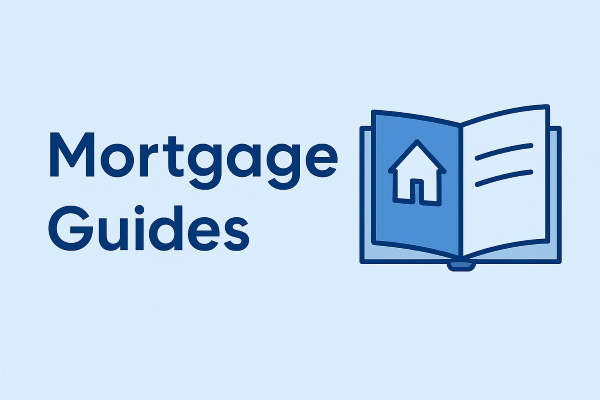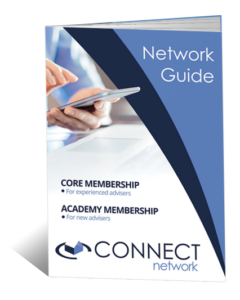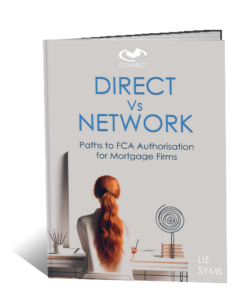Mortgage Guides
Mortgage Guides | Your Complete Client’s Guide to Mortgages
Buying a home, investing in property, or refinancing can feel overwhelming especially with so many mortgage options available. That’s why we’ve created these comprehensive Mortgage Guides, designed to give you clear, practical insights into every type of mortgage.
Whether you’re a first-time buyer trying to understand the basics, a landlord exploring buy-to-let options, or a homeowner considering remortgaging, this guide breaks down complex terms into straightforward advice. You’ll find explanations of the different mortgage types, their workings, and the situations where each may be most suitable.
Our goal is simple: to help you feel confident, informed, and fully prepared when making one of the biggest financial decisions of your life. Think of this as your one-stop resource for understanding mortgages presented in plain English, without the jargon.

Browse Our Content Hub Mortgage Guides
First Time Buyer Guide
Remortgage Guide
Buy-to-Let Guide
Moving Home Guide
Second Charge Mortgage Guide
Adverse Credit Mortgage Guide
Bridging Loan Guide
Equity Release Mortgage Guide
Portfolio Landlord Mortgage Guide
Portfolio Landlord Mortgage Guide
HMO Mortgages
Limited Company Mortgage Guide
First Time Landlord Guide
Expat Mortgage Guide
Development Finance Guide
Commercial Mortgage Guide
Semi-Commercial Mortgage Guide
Commercial Mortgage Guide
Self-Employed Mortgage Guide
100% Mortgage Guide
Getting Settled and Improving Your Home
Check Who Supplies Energy to Your Property
Understanding who provides your gas and electricity is a smart way to stay in control of your energy bills. It also helps you switch to a cheaper tariff, reduce energy usage, and avoid paying for power you didn’t use.
Quick Facts About UK Energy Supply
| Feature | Details |
|---|---|
| Energy Networks | UK has 8 gas networks, and 14 electricity distribution regions |
| Dual Fuel Benefits | Using one supplier for gas and electricity may offer bundled savings |
| Meter Numbers | MPAN (for electricity) and MPRN (for gas) are used for switching |
| Useful Tools | You can check suppliers using official tools like Find My Supplier |
Why You Should Know Your Energy Supplier
Whether you’ve just bought a new home or are reviewing your bills, knowing who provides your energy is essential. This allows you to:
Avoid being charged for someone else’s usage
Submit accurate meter readings from day one
Switch to a better deal once you’re settled in
How to Confirm Your Energy Provider
If you’ve lived in the property for a while, the quickest way to find your supplier is to:
Search your inbox for past energy emails or account confirmations
Check your paper bills if you still receive them
Look at your meter — the supplier may be written on a sticker or tag nearby
Just Moved In? Here’s What to Expect
If you’ve recently taken ownership or started renting, a welcome letter from the current supplier is often sent to “The Occupier.” It will likely include the supplier name, account details, and contact number.
Once received, do this immediately:
Take a meter reading on the day you move in
Call the supplier to open a new account in your name
Make sure you’re only billed for usage from your moving date
This step prevents you from being liable for any energy used before your occupancy began.
Not Sure Who Supplies the Property? Use These Steps
If no paperwork is available or you’re unsure, there are official ways to confirm your gas and electricity providers:
To find your gas supplier:
Visit: Find My Supplier
Call: 0870 608 1524 (up to 13p per minute from landlines)
This service helps identify your gas provider based on your address and postcode.
Make a note of your MPRN (Meter Point Reference Number), which is unique to your property and important when setting up or switching accounts.
To find your electricity supplier:
Use the Electricity Distribution Network Operator (DNO) map: Energy Networks UK
Contact your regional operator to get details on your electricity supplier
They may also ask for your MPAN (Meter Point Administration Number), often found on your electricity bill or meter
Switching Providers Later
Once you’ve moved in and have accurate readings, you can compare energy deals using tools like:
These platforms can help you find cheaper tariffs or dual fuel deals tailored to your usage.
Taking Your Broadband with You When You Move House (UK 2025)
Moving to a new home is never easy. Between packing boxes and arranging removals, broadband is often forgotten. However, transferring your internet and phone services doesn’t have to be complicated. Most UK providers have made it easier to stay connected during your move. This guide shows you how to move your broadband with major suppliers and what you need to prepare.
Moving Broadband Services with BT
If you’re a BT customer planning a house move, there’s good news. You can take your broadband and phone services with you. Before contacting BT, you’ll need a few details:
Your BT account number
Your current phone number
The address you’re moving to
Your confirmed moving date
BT asks for at least 14 days’ notice to arrange the transfer. If your new home already has a BT line, your service may be up and running within three to five days. If not, BT will install a new line, which could take up to two weeks and may include a fee of around £140.
Bring your current router and equipment with you to avoid unnecessary costs. Unless you are near the end of your contract, BT won’t ask you to renew your deal when you move.
Sky Broadband When You Relocate
Sky also offers a smooth home-moving process. You can organise it through the Sky Moving Home section online. To get started, you’ll need:
Your Sky ID
Your account details
The address you’re moving to
Just like BT, Sky requires two weeks’ notice and allows you to book up to 90 days in advance. If you have Sky TV, please note that your new home will require a satellite dish. If it doesn’t, an engineer visit will cost about £65. You can also choose your own installer, giving you more flexibility.
Good news — your contract remains in effect at the new property. There’s no need to sign a new agreement unless you choose to upgrade.
Moving Home with TalkTalk Broadband
TalkTalk makes moving easier through its Moving Home Portal. You’ll need to give:
The full address of your new home
The planned moving date
A £60 transfer fee usually applies. However, if you choose to re-contract during the move, this fee is often waived. You’ll still need to give at least 14 days’ notice, but you can arrange your move up to three months in advance.
You can keep your current package or switch to a new one. TalkTalk offers flexible options, making it a good choice for movers.
Relocating with Virgin Media
If you’re with Virgin Media, you’ll need to call customer support to move your broadband. Prepare the following:
Your account number
Your old and new addresses
The date of your move
Virgin Media charges £20 to transfer services, or £35 if you’re a new or renewing customer. In many cases, you can set up the equipment yourself, which saves time and installation fees.
You can keep your current contract or choose a new one if upgrading. It’s best to give notice well in advance to avoid connection delays.
Considering a New Broadband Provider?
If you’re out of contract, moving home is the perfect time to switch. There’s no penalty for changing providers, and you might find better speeds or cheaper prices in your new area.
Use comparison websites like:
These tools can show current offers based on your postcode.
Check Fibre Broadband Availability at Your New Address
Wondering whether your new home supports full fibre broadband? Use a postcode checker to find out. You can try:
These will show whether fibre is available and what speeds to expect.
Summary: Plan Ahead for a Smoother Connection
Transferring broadband when moving house is easier than it sounds — as long as you plan ahead. Most providers only need two weeks’ notice. Take time to compare options, check local coverage, and avoid unnecessary fees by reusing your current equipment. If you’re switching providers, confirm you’re out of contract to avoid exit charges.
And if you’re buying your first home, don’t forget that broadband is just one of many setup steps. For more tips on settling into your new home, including energy setup and mortgage advice, visit our
home mover hub.
At-a-Glance: Broadband Moving Charges and Timelines
| Provider | Notice Required | Transfer Fee | Installation Cost | Book in Advance | Self-Install? |
|---|---|---|---|---|---|
| BT | 14 days | Free | £140 (if new line) | Yes, up to 90 days | Yes (if existing line) |
| Sky | 14 days | Free | £65 (if no dish) | Yes, up to 90 days | Yes |
| TalkTalk | 14 days | £60 (waived with re-contract) | Varies | Yes, up to 90 days | Yes |
| Virgin Media | 14+ days | £20 (£35 if new/re-contract) | Free (self-install) | Yes | Yes |
People Also Viewed These Guides
FAQ: Mortgage Guides
| Question | Answer | Location / Relevance |
|---|---|---|
| What is a mortgage guide and why should I read one? | A mortgage guide provides clear, step-by-step explanations of mortgage types, lender criteria, and the application process. Reading one helps you understand key terms before speaking with a broker. | UK-wide homebuyers and first-time applicants |
| How can a mortgage guide help me choose the right lender? | It compares different lenders, explains interest rates, and shows how affordability is assessed, helping you prepare financial documents in advance. | Nationwide, including England, Scotland, Wales, and Northern Ireland |
| Are your mortgage guides suitable for first-time buyers? | Yes, each guide includes simplified examples and affordability checklists designed to help first-time buyers understand deposit requirements and government schemes. | London, Manchester, Birmingham, Bristol, and other major UK cities |
| Do your mortgage guides cover buy-to-let and investment properties? | Yes, we provide detailed buy-to-let and HMO mortgage guides that outline deposit sizes, rental stress tests, and limited company options. | Suitable for landlords and investors across the UK |
| Can I download the mortgage guides for future reference? | Most guides can be downloaded in PDF format, allowing you to review them anytime or share them with your adviser. | Available online through Connect Experts across the UK |
| How often are the mortgage guides updated? | Each guide is reviewed quarterly to reflect the latest FCA regulations, lending criteria, and market trends. | Updated across all UK regions to maintain compliance |
| Do the guides explain mortgage protection options? | Yes, the guides include sections on life insurance, income protection, and critical illness cover to help you make informed decisions about financial security. | Relevant for all UK mortgage applicants |
| Are the guides written by qualified advisers? | Every guide is reviewed and approved by qualified, FCA-authorised mortgage advisers within the Connect Experts network. | Authored by Connect Experts, serving clients UK-wide |
| Can I speak to a mortgage adviser after reading a guide? | Yes, each guide links directly to our adviser directory so you can connect with a professional who understands your needs. | Nationwide adviser access |
| Are there language-specific versions of your guides? | Some guides are available in Punjabi, Urdu, Hindi, and Mandarin to support clients who prefer information in their native language. | Available across multilingual regions in the UK |



